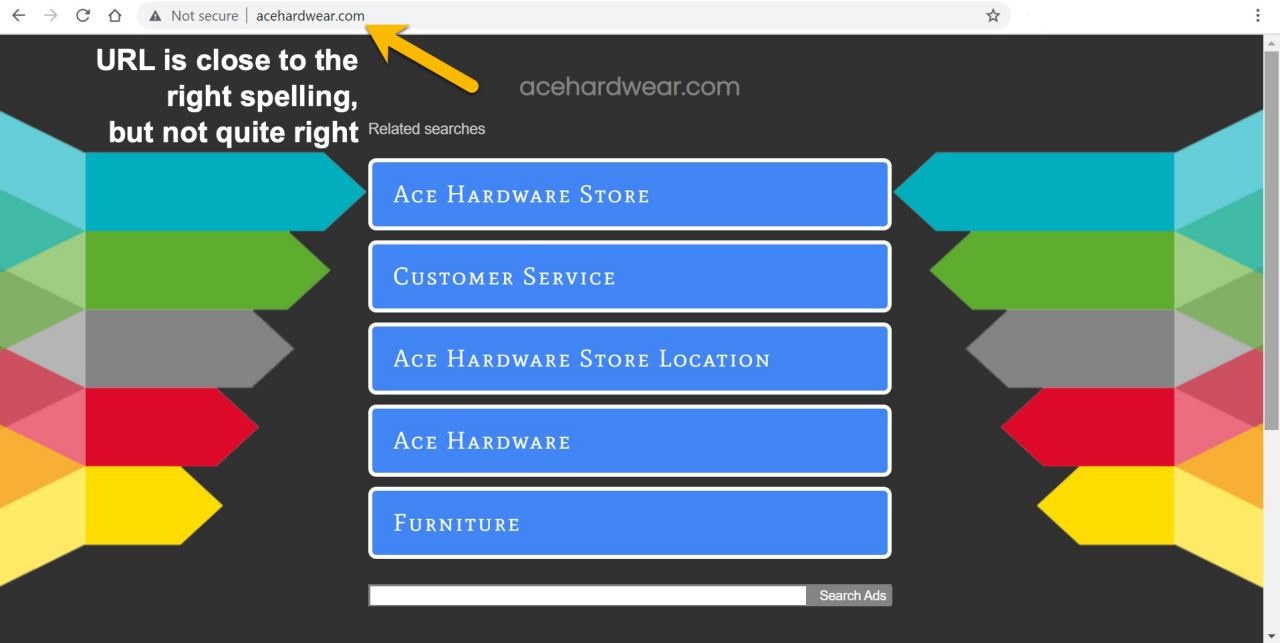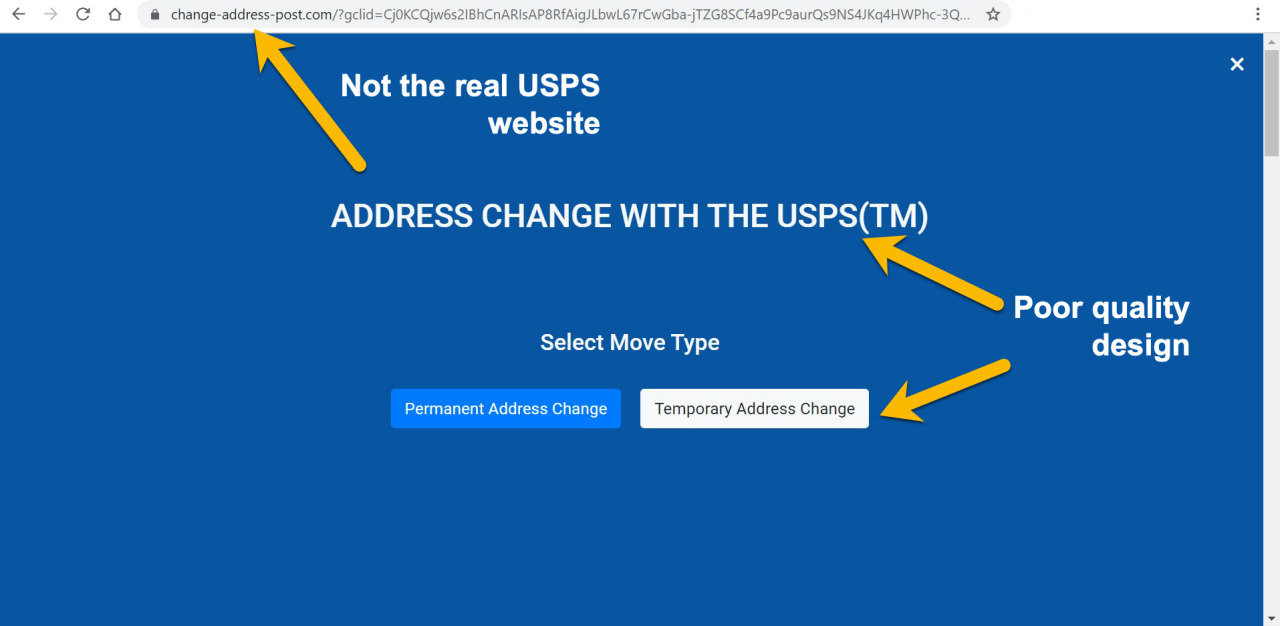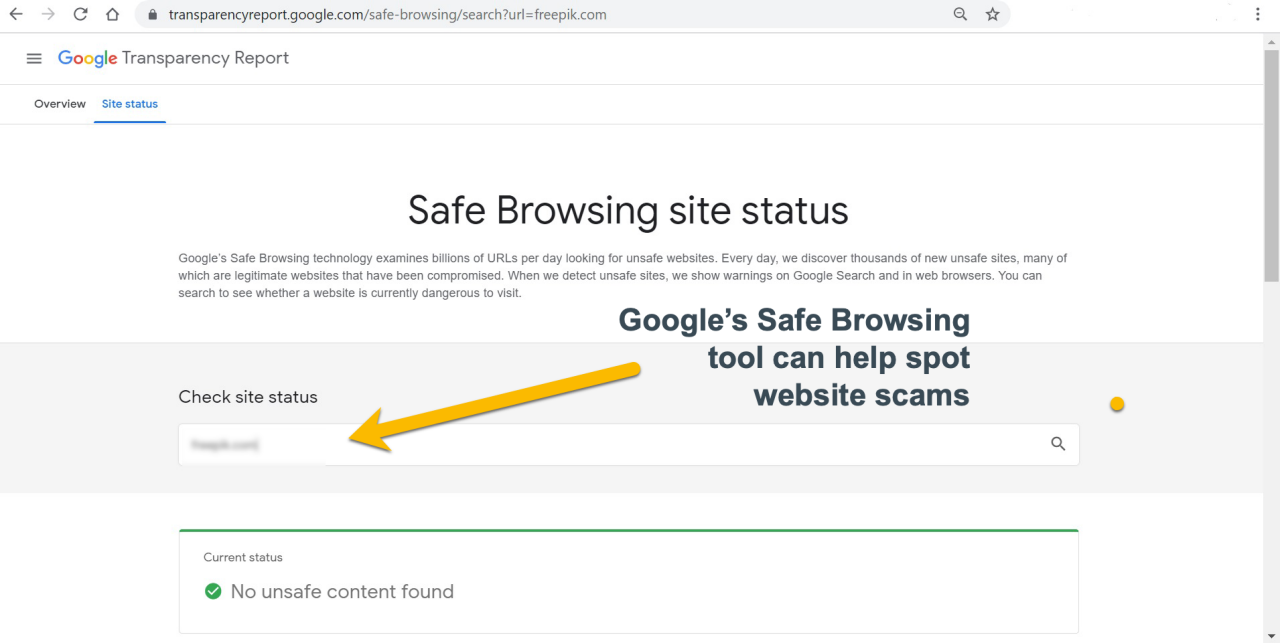BBB Tip: How to identify a fake website
Scam websites often have very similar URLs and can look nearly identical to the real website. Always look out for these red flags before entering your personal or payment information.
Scammers are always creating new and improved lookalike websites to trick you out of your personal information and money. These websites may have a very similar URL or look nearly identical to the real website you are searching for, which means they can be hard to identify. Recent examples of this kind of scam include fake streaming service activation prompts, DMV impostors and fake postal service websites. Even BBB.org has been impostored, when scammers have tried to look like BBB to collect information fraudulently. Protect yourself with the following tips to help you spot fake websites set up by scammers.
How to steer clear of fake websites
 Sometimes the URL is close to the right spelling, but not quite right.
Sometimes the URL is close to the right spelling, but not quite right.
- Look closely at the domain name. One way fake websites trick people is by using a domain name that is extremely close to a real business’ or organization’s domain name. Upon closer examination, you might notice that two letters are swapped or it’s just slightly misspelled. If you find a spelling error in the domain name, you’re not on the official site and it’s best to close the tab. In the case of BBB impostors, if you don't see BBB.org, it is probably not BBB. If you're not sure, contact your local BBB.
- Watch out for tricky subdomains. Sometimes attackers hope you will confuse a subdomain with the real domain name of their website. For example, a scammer might use the domain name netflix.com.movies.com hoping you won’t notice the real domain name is actually movies.com.
- Be careful with links in emails. Phishing scams are extremely common. A scammer might send you an email that looks like it comes from a reputable business in hopes that you’ll click on the links without a second thought. Always hover over links in unsolicited emails and even in emails that come from a brand, business, or person you think you know. If the link doesn’t match the blue text or if it’s a short link and you can’t tell where it leads, don’t click it. If you do, you may end up on a lookalike website where your personal information could be compromised.
 Fake sites often have poorly designed pages. You wouldn't expect the USPS website to look like this, would you?
Fake sites often have poorly designed pages. You wouldn't expect the USPS website to look like this, would you?
- Check the design quality. Kaspersky warns that low quality visuals, odd layouts, and poor web design can all be warning signs of a fake website. Before you take action on a site, ask yourself if the design quality measures up to the reputation of the business or person it represents.
- Pay attention to contact information and shop policies. Legitimate online stores should provide you with a physical address and working phone number in the contact section. If those elements are missing, it’s best to take your business elsewhere. Return and shipping policies should be clear and easy to understand. If a shop has policies, but you aren’t convinced it’s legitimate, try copying and pasting the policy section into your web browser to see if it’s been copied and pasted from another website.
- Do a search for reviews and potential scams. If you still can’t tell if a website is real or fake, try typing the website name along with the word “scam” or “reviews” into your web browser. If other people have been victims of a fake site, you’re likely to find reports when you search for scams. A reputable store should have plenty of reviews for you to examine. Be alert to reviews that are generic, sound robotic or unnatural, or are too brief as these could be fakes.
 Google's safe browsing tool can be helpful in identifying fake sites.
Google's safe browsing tool can be helpful in identifying fake sites.
- Try a fake website checker. Website checkers, such as Google’s Safe Browsing tool can also help you decide whether a website is safe to visit.
For More Information
Read the BBB Tip: Smart Online Shopping and visit BBB.org/ScamTips to stay alert to new and commonly used scam tactics.
Report scams at BBB.org/ScamTracker.
Note: All third party trademarks (including logos and icons) referenced by IABBB (or author of content) remain the property of their respective owners.
